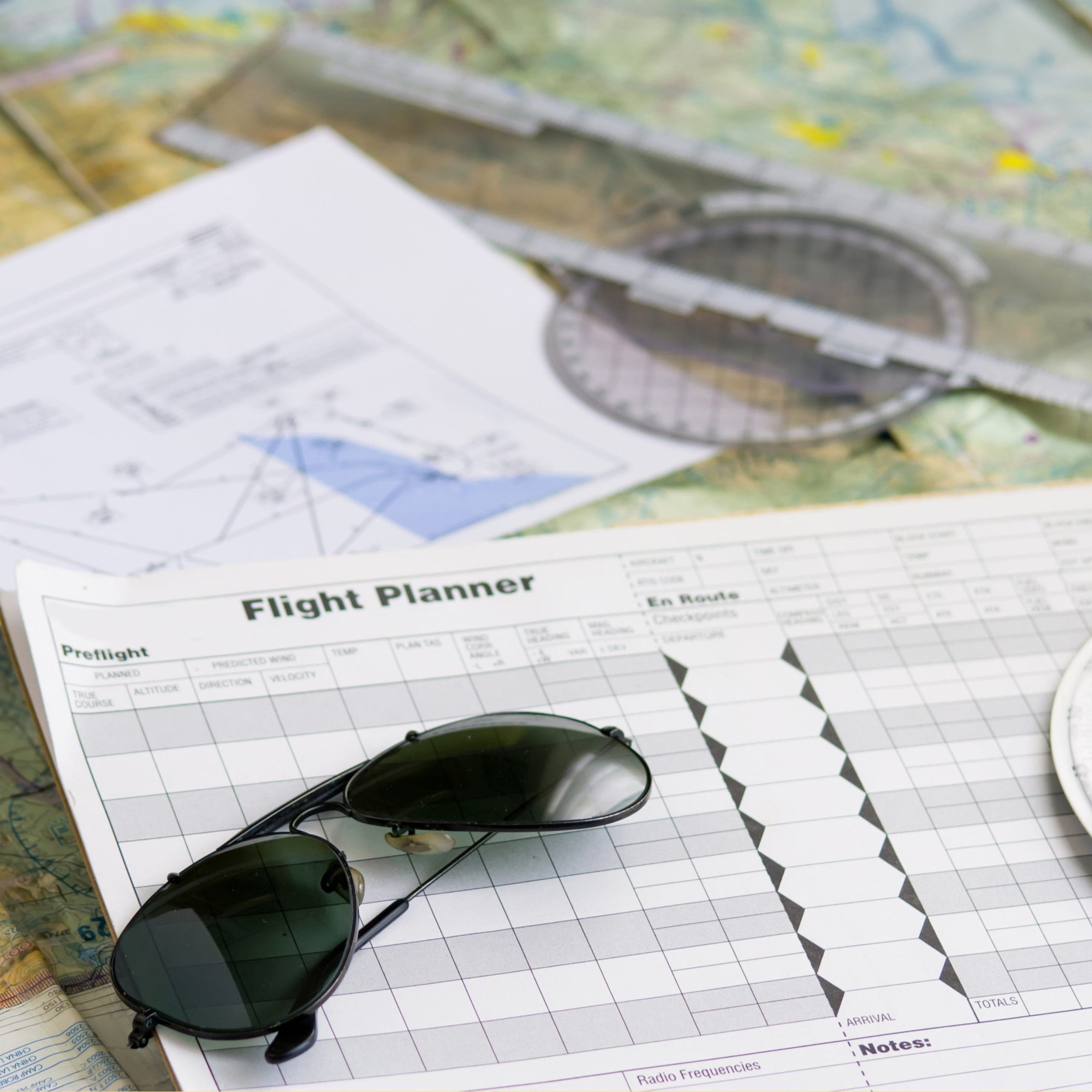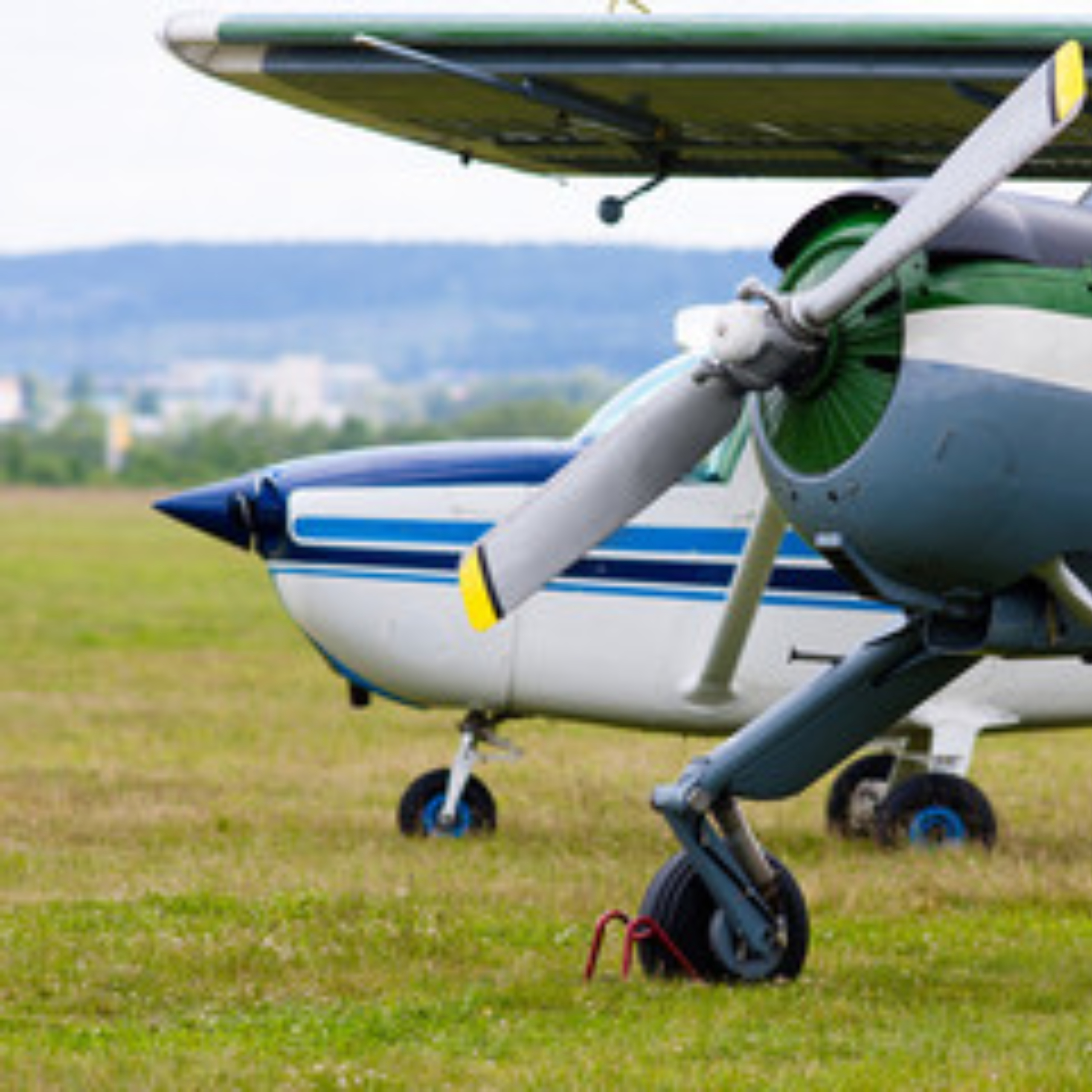Top 10 Tips For Enjoying Your Cross-Country Flight
Posted by BAS | Aircraft Salvage Experts on Feb 21st 2023
Flying has always been a passion for both professional pilots and aviation enthusiasts. Part of the training to become a pilot involves cross-country flights. These are defined as flights to airports located more than 25 NM from the aerodrome of departure.
We have read many, many articles on how to fly cross country. So we wanted to put together some tips we gathered from pilots around the country on what makes that long, sometimes arduous journey enjoyable; and some safety tips that have kept our pilot friends safe and warm. So here are the top 10 ways to prepare for an enjoyable and safe cross-country flight.

Carry emergency equipment and medical kits
Aircraft are fitted with emergency equipment such as fire extinguishers and first aid kits. Before commencing any cross-country flight, it is essential to have additional emergency equipment and medical kits on board. Always ensure the first aid kits are packed with the appropriate medical equipment and any medications you need in case of an emergency during the journey.
Depending on the nature of the flight, a pilot may carry additional survival tools such as pen knives, flashlights, food and water, and a reflective jacket. Before loading the extra equipment, a pilot should consider the space available in the aircraft. While carrying some of this equipment is crucial, it is never advisable to overload the aircraft. Always consider appropriate weight and balance specifications.
Suppose the flight involves a flight path over water. In that case, the pilot should ensure every passenger on board is covered with an inflatable life jacket with a layer of reflective material.
Plan for at least one night's stay
Cross-country flights tend to go for a few hours, especially when flying slower, single-engine, general aviation aircraft. Although the flight is planned to last a couple of hours, having an overnight bag on standby with the necessary equipment you would need when having a sleepover at your friend's place is vital.
Prior preparation with collectibles such as toiletries, snacks, and additional funds will take the hustle off your chest when things go wrong. It will also give you safer options if you encounter a mechanical issue or poor weather at your destination airport.
Ensure you have all your charts
Aeronautical charts are vital to all flights, even though you are doing circuits. However, some student pilots argue that having physical charts needs to be updated due to the cutting-edge technology brought to the industry by electronic devices. Their argument may be valid, considering these electronic devices are more accessible and accurate than aeronautical charts.
However, the ideal question is, what if your digital device malfunctions mid-air? All aeronautical charts should be in order before you commence your pre-flight checklists. It is also important to double-check that all charts are sufficient, relevant, and current.

Have a notebook and quality pen within reach
Electronic devices have revolutionized flying. GPS has made navigation very accurate and easy to understand. The navigation tablet can also be a notebook for writing essential details like special ATC clearances and frequencies. But don’t over-rely on electronics and GPS, be ready to navigate by other means if the situation arises.
The tablet may fail for one reason or another. So instead of panicking, it is always wise for a pilot to have a notebook and a pen within hand's reach to cater for such unseen eventualities.
Practice Briefing before any action
Cross-country flights are long. Some may tempt the pilot's focus and keenness. This happens in solo flights when the pilot is the only soul onboard. The repercussions may be catastrophic.
Pilots should always avoid doing procedures from their heads. Instead, it would be best to always say things aloud, as it reinforces your focus and understanding of the situation. Speaking procedures out loud is highly recommended whether you fly solo or have a passenger on board. This should commence from the planning stage to the termination of the flight.
Plan and update radio frequencies
Aeronautical charts display different radio frequencies of other stations. Have com one and com two updated regularly as you commence your journey. Since you can listen to both frequencies but only transmit on one, constantly monitor the frequency you will switch to next.
Keep an open mind while communicating
Communicating with ATC may be necessary, but it can be monotonous. Specific clearances could remain exactly the same for a pilot's entire career. The same also applies to readbacks. A pilot may have done so many readings that the brain generates the readback autonomously. Combined with the monotonous communication, a pilot may correctly read back a clearance by ATC but end up doing the opposite.
This has a devastating effect as the pilots may develop a habit of leaning to their expectations rather than listening carefully for changes in routine inflight procedures.
Keeping an open mind will allow the pilot to note abnormal communication instructions. He will also be in a position to respond effectively and efficiently when required to do so by the ATC. This includes unexpected go-around procedures or abrupt changes in flight levels, speeds, and direction when ATC units try to maintain separation standards.
Take advantage of flight following
As indicated earlier, cross-country flights may last from hours to days. That’s a lot of time in the air. At the cruising phase, the flight may become boring and tiresome to some pilots since very little is done at this phase of flight, especially with an autopilot engaged. For this reason, pilots should take advantage of flight following and use the ATC units to kill the monotony.
Frequently talking to ATC keeps the minds of the pilot on the flight during these times. For student pilots, this is an advantage to master and practice their communication skills to help them become better communicators in the future.

Buy yourself some extra flight time
While carrying extra fuel may bring about additional costs, having more than you need on an extended flight is always wise. Most likely, having an extra 15 to 30 minutes of fuel onboard does no harm. This certainly has to align with the weight requirements of the flight. Overloading an aircraft with excess fuel will reduce the aircraft's performance, especially during takeoff and climb.
Additional fuel will also help you cater for unforeseen eventualities rather than those factored in on the contingency fuel. Without extra endurance, you will become more stressed, take more shortcuts, and probably make careless mistakes.
Frequently simulate emergency procedures
It is always advisable for pilots to have a plan in case of operations become abnormal. The program comes in handy during unforeseen emergencies, especially during critical phases of flight. Having the plan prepares the pilot psychologically in case the engine fails during the climb. During the cruise, the pilot may look into the vicinity for favorable flat areas to safely land the aircraft in an emergency. When airports are near, the pilot may look for the best airport to fly to when the situation deems a diversion or requires an immediate landing.
Final thoughts
Cross-country flights require prior preparation before they are conducted. Carrying a simple sleeping bag will relieve you from the pressure of getting home, which may blind you in cases where risks are involved, and important decisions such as delaying or canceling a flight are concerned. It would help if you did not over-rely on the electronic devices used for navigation. Updated aeronautical charts should be within the pilot’s reach in case manual confirmation is necessary. And don't forget to enjoy the journey. Take pictures and video to share with other enthusiast. Enjoy the communications with ATC and learn as much as you can as you travese wide areas of unfamiliar territory.


